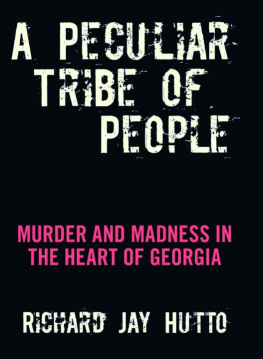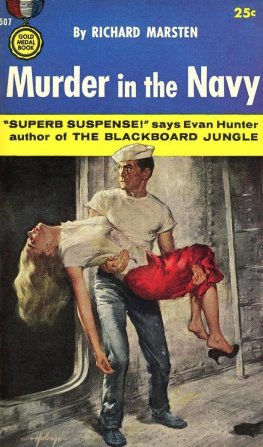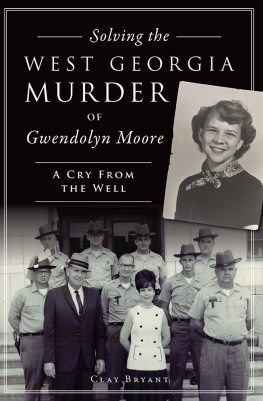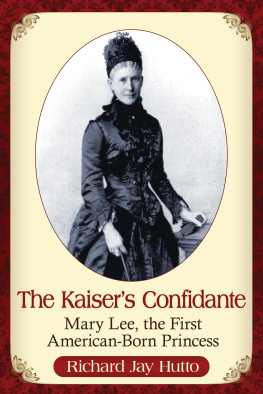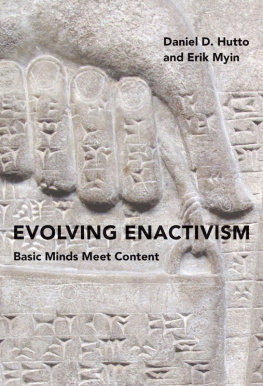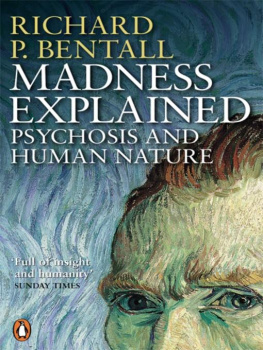



Table of Contents
PROLOGUE
On the morning of May 12, 1960, the Burge family maid discovered the body of Mary Burge, dead in her large, canopied bed, carpet fragments lodged under her fingernails from her desperate attempt to claw her way to escape from the murderer. The family physician, Dr. William R. Birdsong, was called immediately, followed soon thereafter by the Bibb County coroner. The medical examiner was notified just before the sheriff, who placed a call to the Burges' only child, John L. Burge, who was then teaching at Auburn University.
Evidently no one thought to call the dead woman's husband.
Chester Burge lay alone at the local hospital recovering from hernia surgery, without receiving any word from the authorities, and when the newly widowed patient heard on the radio the news of his wife's murder, he shouted from his bed and, in what a contemporary called "that high-pitched voice," telephoned his cousins who were staying in Burge's guest cottage. Chester did not arrive at the crime scene (his wife's bedroom) until early afternoon, when he exited an ambulance still clad in light green pajamas and maroon bathrobe. He was carried on a stretcher led by Detective Frank Lanneau through his darkened home, a police photographer close behind, his flash popping brightly. In a shaky voice, Chester told the officer that he had given his wife a wallet containing $5,000 as she was leaving the hospital the previous night, and asked her to take it home.
"We haven't found it," Lanneau told Chester. "So robbery-"
"Did you look under the mattress?" Chester replied.
He was right. The wallet was recovered from between the mattress and box springs, and contained only one dollar and a few assorted papers. A locked closet had been pried and its paint chipped, as though someone had attempted unsuccessfully to open it. Chester unlocked it for Lanneau and determined that their substantial cash, liquor, and valuable papers were intact.
A loaded .38 caliber revolver lay untouched on the bedside table. His wife's jewels, which he had stated openly and on numerous occasions were worth $250,000, were all accounted for-except one diamond clip. Undisturbed on the nightstand was the diamond necklace she had worn to the hospital when she had visited him the night before.
Her ten-carat diamond ring remained on her finger, though the jewel was missing, having been plucked from its mooring. Her killer had battled so strongly to steal the ring that her finger had very nearly been severed from her hand.
The police photographer's flash bulb popped once more, and Lanneau caught a glimmer on the carpet. The diamond from Mary's ring was half-hidden on the floor, tangled in the rug's fibers.
Mary and Chester's most recent wills, written the previous January, sat on the bedroom desk, the seal broken only on Mary's.
Save for the sounds of the photographer and detective, the room was silent. Mary's "big, noisy" pet parrot, who voiced loud warnings when anyone approached, had been found bleeding on the day of Mary's murder and had died at dusk on the night its owner would be killed, carried away only hours before the woman who loved it. The family's setter dog, Boy, had been found a few hours before Chester's arrival, stashed and whimpering in the basement, behind a door locked from the inside.

My wife and I moved to Macon in 1993 and had lived in our house only a few days when I first recall hearing the mod ern moniker for Chester Burge's old mansion-"the murder house," the neighbors casually called it, always in passing. Still elegant even today, the Shirley Hills neighborhood retains an undeniable cachet even though newer money has moved to Macon's northern suburbs. Every day as I turn onto my street, the headlights of my car sweep the lawn of Chester's house on the corner. Like a teenager who was told the dark, abandoned house in the neighborhood is haunted, I was intrigued, drawn toward the mystery of the mansion on the hill.
I'd known Jordan Massee a year when I confessed my strange fascination with the house and my curiosity about the stories that it held. A Macon literary icon, Massee held the history of the city in his fecund mind. In the early twentieth century, Massee's family had served as the literary centerpiece of Macon, hosting writers and artists of varying colors and stripes, even playing host to Tennessee Williams on his visits to Macon. It was under Jordan's influence that Williams finished Cat On a Hot Tin Roof, and the author made it clear that Jordan's father, the elder Massee, was the model for Big Daddy. (Jordan's father was rumored to have lost the family mansion in a poker game, which would have made Williams smile: he loved him for his larger-than-life personality.) When Cat opened in New York, Jordan and his father were there at Williams's invitation. Later, when Carson McCullers-Jordan's cousin-held her now-famous literary luncheon in New York, playing host to Arthur Miller, Isak Dinesen, and Marilyn Monroe, Jordan was there, too. He was, in fact, the only guest who wrote about the memorable event. When I would visit him in the mid-1990s, there sat on his bookshelf a framed image of that gathering. Dinesen is seated in the center drawing the rapt attention of McCullers while Miller looks over her shoulder, with a handsome young Massee standing behind in the company of angels. A quiet Marilyn rests on the edge of the picture, startling in her beauty but proud to be part of such a learned group even if on its periphery.
Jordan found my interest in Chester Burge's home and history amusing at first, feeding me stories here and there, enticing me with bits of the strange and sordid tale of a family most of Macon would like to forget. He enjoyed sharing a little at a time. It wasn't until he was prompted by a letter from New York that his amusement turned to intensity. A writer from the Northeast wrote Jordan, declaring she was doing research on the trial of Burge with the intention of writing a book, and Jordan came alive. Over cocktails at his house one early evening, he presented to me a scrapbook, filled with clippings from the trial sent to him by his sister while he was living in New York. As he wrote years later in the front of the album, "I made a scrapbook ... so that Carson [his cousin, author Carson McCullers] could read it. This became her favorite murder since Lizzie Borden."

